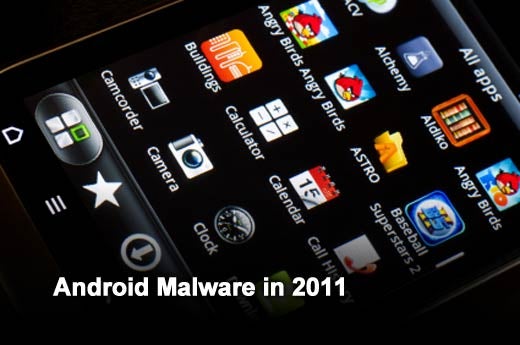Fortinet (NASDAQ: FTNT) – a leading network security provider and the worldwide leader of unified threat management (UTM) solutions – recently released its top five Android malware families and tested a new vulnerability that affects Android phones at the root level.
On November 15, the analyst firm Gartner issued a report that cited Google’s Android mobile operating system had reached a global 52.5 percent smartphone market share, while iOS trailed in third, behind Symbian, with an 18 percent market share. FortiGuard Labs found interesting the disparity between the amount of malware found on the Android operating system compared to that found on iOS relative to their market share size.
“FortiGuard Labs has found approximately five times the amount of malicious families on the Android OS versus what we’ve found on iOS,” said Axelle Apvrille, senior mobile anti-virus researcher at Fortinet. “We believe that this disparity can be attributed to the way Apple handles iOS application development and distribution. Unlike Android, which makes it fairly easy to place applications for people to download, iOS requires developers to undergo some strict screening from Apple before the application can make it to the Apple Store. That’s not to say that Apple is totally immune from being infiltrated by malware – the Eeki banking worm proves that – but it is a testament to why we’re seeing so little activity on the iOS platform.”
“Unfortunately, we believe Android’s higher market share and open development environment comes with a price; an almost six fold increase in malware targeting the operating system,” Apvrille continued. “To date, our Labs have seen a 90 percent increase in Android malware families in 2011 compared to 2010, while malicious iOS families only increased by 25 percent. Of course, those statistics do not account for infection rates or dangerousness.”
Android Vulnerability
In November, Jon Larimer and Jon Oberheide published a vulnerability for Android platform 2.3.6 that revealed an easy way for hackers and malicious software developers to gain and exploit root access to an Android device.
Click through for the top five Android malware familes identified in 2011 by Fortinet.
Android’s first botnet, which sends a victim’s geographic location and controls his/her phone remotely. For example, Geinimi can force the infected phone call a given phone number.
A Trojan live wallpaper that steals private information such as the victim’s subscriber number (IMSI) and automatically visits websites that the malware directs it to.
Another botnet that has multiple capabilities such as remotely installing other malware, remotely starting specific applications and adding bookmarks.
A fake instant messenger application that sends SMS messages to premium phone numbers.
A Trojan that sends SMS messages to premium numbers.








